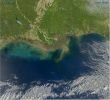If you want to go to visit a national park, then reading one of these following facts about Uluru might be one of your best information you need. Uluru, also known as Ayers Rock, is a large sandstone rock formation in the southern part of the Northern Territory in central Australia. It lies 335 km south west of the nearest large town, Alice Springs, 450 km by road. To get to know more about this national park, here are some other facts about Uluru you may like.
Facts about Uluru 1: Home to Various Living
Kata Tjuta and Uluru are the two major features of the Uluru-Kata Tjuta National Park. Uluru is sacred to the Anangu, the Aboriginal people of the area. The area around the formation is home to a plethora of springs, waterholes, rock caves, and ancient paintings. Uluru is listed as a UNESCO World Heritage Site.
Facts about Uluru 2: Name
The local Pitjantjatjara people call the landmark “Uluru”. This word has no further particular meaning in the Pitjantjatjara language, although it is used as a local family name by the senior Traditional Owners of Uluru.
Facts about Uluru 3: Description
Uluru is one of Australia’s most recognisable natural landmarks. The sandstone formation stands 348 m (1,142 ft) high, rising 863 m (2,831 ft) above sea level, with most of its bulk lying underground, and has a total circumference of 9.4 km (5.8 mi)
Facts about Uluru 4: Kata Tjuta
Kata Tjuta, also called Mount Olga or The Olgas, lies 25 km (16 mi) west of Uluru. Special viewing areas with road access and parking have been constructed to give tourists the best views of both sites at dawn and dusk.
Facts about Uluru 5: Fauna and Flora
Historically, 46 species of native mammals are known to have been living near Uluru; according to recent surveys there are currently 21. A?angu acknowledge that a decrease in the number has implications for the condition and health of the landscape.
Facts about Uluru 6: Admission
Admission to the park costs A$25 per person and provides a three day pass. Passes are non-transferable and all passes are checked by park rangers.
Facts about Uluru 7: Climbing
Climbing Uluru is a popular attraction for visitors. A chain handhold added in 1964 and extended in 1976 makes the hour-long climb easier, but it is still a long (800 m/0.5 mi) and steep hike to the top, where it can be quite windy. It is recommended individuals drink plenty of water whilst climbing, and those who are unfit, suffer from vertigo or medical conditions restricting exercise, do not attempt it.
Facts about Uluru 8: Tourism
The development of tourism infrastructure adjacent to the base of Uluru that began in the 1950s soon produced adverse environmental impacts. It was decided in the early 1970s to remove all accommodation-related tourist facilities and re-establish them outside the park.
Facts about Uluru 9: History
Archaeological findings to the east and west indicate that humans settled in the area more than 10,000 years ago. Europeans arrived in the Australian Western Desert in the 1870s. Uluru and Kata Tjuta were first mapped by Europeans in 1872 during the expeditionary period.
Facts about Uluru 10: Photography
The A?angu also request that visitors do not photograph certain sections of Uluru, for reasons related to traditional Tjukurpa beliefs. These areas are the sites of gender-linked rituals, and are forbidden ground for A?angu of the opposite sex to those participating in the rituals in question.
Hope you would find those Uluru facts really interesting and useful for your additional reading.










 www.PortlandPayday.Loans
www.PortlandPayday.Loans